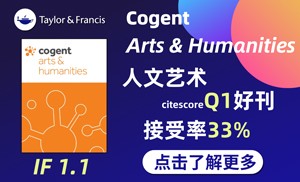-
In This Issue Proc. Natl. Acad. Sci. U.S.A. (IF 9.4) Pub Date : 2024-07-23
Proceedings of the National Academy of Sciences, Volume 121, Issue 30, July 2024.
-
HLA-C expression in extravillous trophoblasts is determined by an ELF3–NLRP2/NLRP7 regulatory axis Proc. Natl. Acad. Sci. U.S.A. (IF 9.4) Pub Date : 2024-07-25 Bowen Gu, Gia-Han Le, Sebastian Herrera, Steven J. Blair, Torsten B. Meissner, Jack L. Strominger
The distinct human leukocyte antigen (HLA) class I expression pattern of human extravillous trophoblasts (EVT) endows them with unique tolerogenic properties that enable successful pregnancy. Nevertheless, how this process is elaborately regulated remains elusive. Previously, E74 like ETS transcription factor 3 (ELF3) was identified to govern high-level HLA-C expression in EVT. In the present study
-
Active interface bulging in Bacillus subtilis swarms promotes self-assembly and biofilm formation Proc. Natl. Acad. Sci. U.S.A. (IF 9.4) Pub Date : 2024-07-25 Siyu Liu, Ye Li, Haoran Xu, Daniel B. Kearns, Yilin Wu
Microbial communities such as biofilms are commonly found at interfaces. However, it is unclear how the physical environment of interfaces may contribute to the development and behavior of surface-associated microbial communities. Combining multimode imaging, single-cell tracking, and numerical simulations, here, we found that activity-induced interface bulging promotes colony biofilm formation in
-
Aversive memories can be weakened during human sleep via the reactivation of positive interfering memories Proc. Natl. Acad. Sci. U.S.A. (IF 9.4) Pub Date : 2024-07-25 Tao Xia, Danni Chen, Shengzi Zeng, Ziqing Yao, Jing Liu, Shaozheng Qin, Ken A. Paller, S. Gabriela Torres Platas, James W. Antony, Xiaoqing Hu
Recollecting painful or traumatic experiences can be deeply troubling. Sleep may offer an opportunity to reduce such suffering. We developed a procedure to weaken older aversive memories by reactivating newer positive memories during sleep. Participants viewed 48 nonsense words each paired with a unique aversive image, followed by an overnight sleep. In the next evening, participants learned associations
-
Ammonia transporter RhBG initiates downstream signaling and functional responses by activating NFκB Proc. Natl. Acad. Sci. U.S.A. (IF 9.4) Pub Date : 2024-07-25 Saurabh Mishra, Nicole Welch, Shashi Shekhar Singh, Khuraijam Dhanachandra Singh, Annette Bellar, Avinash Kumar, Lars N. Deutz, Maxmillian D. Hanlon, Sashi Kant, Sumitava Dastidar, Hailee Patel, Vandana Agrawal, Amy H. Attaway, Ryan Musich, George R. Stark, Francesco Saverio Tedesco, George A. Truskey, I. David Weiner, Sadashiva S. Karnik, Srinivasan Dasarathy
Transceptors, solute transporters that facilitate intracellular entry of molecules and also initiate intracellular signaling events, have been primarily studied in lower-order species. Ammonia, a cytotoxic endogenous metabolite, is converted to urea in hepatocytes for urinary excretion in mammals. During hyperammonemia, when hepatic metabolism is impaired, nonureagenic ammonia disposal occurs primarily
-
USP11 promotes prostate cancer progression by up-regulating AR and c-Myc activity Proc. Natl. Acad. Sci. U.S.A. (IF 9.4) Pub Date : 2024-07-25 Majid Pornour, Hee-Young Jeon, Hyunju Ryu, Sudeep Khadka, Rui Xu, Hegang Chen, Arif Hussain, Hung-Ming Lam, Zhihao Zhuang, Htoo Zarni Oo, Martin Gleave, Xuesen Dong, Qianben Wang, Christopher Barbieri, Jianfei Qi
Androgen receptor (AR) is a main driver for castration-resistant prostate cancer (CRPC). c-Myc is an oncogene underlying prostate tumorigenesis. Here, we find that the deubiquitinase USP11 targets both AR and c-Myc in prostate cancer (PCa). USP11 expression was up-regulated in metastatic PCa and CRPC. USP11 knockdown (KD) significantly inhibited PCa cell growth. Our RNA-seq studies revealed AR and
-
Lack of evidence for direct ligand-gated ion channel activity of GluD receptors Proc. Natl. Acad. Sci. U.S.A. (IF 9.4) Pub Date : 2024-07-25 Masayuki Itoh, Laura Piot, Laetitia Mony, Pierre Paoletti, Michisuke Yuzaki
Delta receptors (GluD1 and GluD2), members of the large ionotropic glutamate receptor (iGluR) family, play a central role in numerous neurodevelopmental and psychiatric disorders. The amino-terminal domain (ATD) of GluD orchestrates synapse formation and maturation processes through its interaction with the Cbln family of synaptic organizers and neurexin (Nrxn). The transsynaptic triad of Nrxn–Cbln–GluD
-
A theory of phonon-induced friction on molecular adsorbates Proc. Natl. Acad. Sci. U.S.A. (IF 9.4) Pub Date : 2024-07-25 Ardavan Farahvash, Adam P. Willard
In this manuscript, we provide a general theory for how surface phonons couple to molecular adsorbates. Our theory maps the extended dynamics of a surface’s atomic vibrational motions to a generalized Langevin equation, and by doing so captures these dynamics in a single quantity: the non-Markovian friction. The different frequency components of this friction are the phonon modes of the surface slab
-
Secondary structure determines electron transport in peptides Proc. Natl. Acad. Sci. U.S.A. (IF 9.4) Pub Date : 2024-07-25 Rajarshi Samajdar, Moeen Meigooni, Hao Yang, Jialing Li, Xiaolin Liu, Nicholas E. Jackson, Martín A. Mosquera, Emad Tajkhorshid, Charles M. Schroeder
Proteins play a key role in biological electron transport, but the structure–function relationships governing the electronic properties of peptides are not fully understood. Despite recent progress, understanding the link between peptide conformational flexibility, hierarchical structures, and electron transport pathways has been challenging. Here, we use single-molecule experiments, molecular dynamics
-
Shot noise-mitigated secondary electron imaging with ion count-aided microscopy Proc. Natl. Acad. Sci. U.S.A. (IF 9.4) Pub Date : 2024-07-25 Akshay Agarwal, Leila Kasaei, Xinglin He, Ruangrawee Kitichotkul, Oğuz Kağan Hitit, Minxu Peng, J. Albert Schultz, Leonard C. Feldman, Vivek K Goyal
Modern science is dependent on imaging on the nanoscale, often achieved through processes that detect secondary electrons created by a highly focused incident charged particle beam. Multiple types of measurement noise limit the ultimate trade-off between the image quality and the incident particle dose, which can preclude useful imaging of dose-sensitive samples. Existing methods to improve image quality
-
Targeted whole-genome recovery of single viral species in a complex environmental sample Proc. Natl. Acad. Sci. U.S.A. (IF 9.4) Pub Date : 2024-07-25 Liyin Chen, Anqi Chen, Xinge Diana Zhang, Maria Teresa Saenz Robles, Hee-Sun Han, Yi Xiao, Gao Xiao, James M. Pipas, David A. Weitz
Characterizing unknown viruses is essential for understanding viral ecology and preparing against viral outbreaks. Recovering complete genome sequences from environmental samples remains computationally challenging using metagenomics, especially for low-abundance species with uneven coverage. We present an experimental method for reliably recovering complete viral genomes from complex environmental
-
Remodeling of perturbed chromatin can initiate de novo transcriptional and post-transcriptional silencing Proc. Natl. Acad. Sci. U.S.A. (IF 9.4) Pub Date : 2024-07-25 Florian Carlier, Sebastian Castro Ramirez, Jaafar Kilani, Sara Chehboub, Isabelle Loïodice, Angela Taddei, Eugene Gladyshev
In eukaryotes, repetitive DNA can become silenced de novo, either transcriptionally or post-transcriptionally, by processes independent of strong sequence-specific cues. The mechanistic nature of such processes remains poorly understood. We found that in the fungus Neurospora crassa , de novo initiation of both transcriptional and post-transcriptional silencing was linked to perturbed chromatin, which
-
Coordination engineering for iron-based hexacyanoferrate as a high-stability cathode for sodium-ion batteries Proc. Natl. Acad. Sci. U.S.A. (IF 9.4) Pub Date : 2024-07-25 Jiang Zhong, Lirong Xia, Song Chen, Zhengwei Zhang, Yong Pei, Hao Chen, Hongtao Sun, Jian Zhu, Bingan Lu, Yinghe Zhang
Iron-based hexacyanoferrate (Fe-HCF) are promising cathode materials for sodium-ion batteries (SIBs) due to their unique open-channel structure that facilitates fast ion transport and framework stability. However, practical implementation of SIBs has been hindered by low initial Coulombic efficiency (ICE), poor rate performance, and short lifespan. Herein, we report a coordination engineering to synthesize
-
Targeted Pareto Optimization for Subset Selection With Monotone Objective Function and Cardinality Constraint IEEE T. Evolut. Comput. (IF 11.7) Pub Date : 2024-07-24 Ke Shang, Guotong Wu, Lie Meng Pang, Hisao Ishibuchi
-
Beta and theta oscillations track effort and previous reward in the human basal ganglia and prefrontal cortex during decision making Proc. Natl. Acad. Sci. U.S.A. (IF 9.4) Pub Date : 2024-07-24 Colin W. Hoy, Coralie de Hemptinne, Sarah S. Wang, Catherine J. Harmer, Matthew A. J. Apps, Masud Husain, Philip A. Starr, Simon Little
Choosing whether to exert effort to obtain rewards is fundamental to human motivated behavior. However, the neural dynamics underlying the evaluation of reward and effort in humans is poorly understood. Here, we report an exploratory investigation into this with chronic intracranial recordings from the prefrontal cortex (PFC) and basal ganglia (BG; subthalamic nuclei and globus pallidus) in people
-
Induction of the Mdm2 gene and protein by kinase signaling pathways is repressed by the pVHL tumor suppressor Proc. Natl. Acad. Sci. U.S.A. (IF 9.4) Pub Date : 2024-07-24 Alexander R. Mabry, Arnima Singh, Brianna Mulrooney, James Gorman, Abigail R. Thielbar, Eric R. Wolf, Lindsey D. Mayo
The tumor suppressor von Hippel–Lindau, pVHL, is a multifaceted protein. One function is to dock to the hypoxia-inducible transcription factor (HIF) and recruit a larger protein complex that destabilizes HIF via ubiquitination, preventing angiogenesis and tumor development. pVHL also binds to the tumor suppressor p53 to activate specific p53 target genes. The oncogene Mdm2 impairs the formation of
-
Cation valency in water-in-salt electrolytes alters the short- and long-range structure of the electrical double layer Proc. Natl. Acad. Sci. U.S.A. (IF 9.4) Pub Date : 2024-07-24 Sarah A. Berlinger, Verena Küpers, Peter J. Dudenas, Devin Schinski, Lucas Flagg, Zachary D. Lamberty, Bryan D. McCloskey, Martin Winter, Joelle Frechette
Highly concentrated aqueous electrolytes (termed water-in-salt electrolytes, WiSEs) at solid-liquid interfaces are ubiquitous in myriad applications including biological signaling, electrosynthesis, and energy storage. This interface, known as the electrical double layer (EDL), has a different structure in WiSEs than in dilute electrolytes. Here, we investigate how divalent salts [zinc bis(trifluo
-
Double-stranded RNA induces antiviral transcriptional response through the Dicer-2/Ampk/FoxO axis in an arthropod Proc. Natl. Acad. Sci. U.S.A. (IF 9.4) Pub Date : 2024-07-24 Jie Gao, Chen-Fei Liu, Ping-Ping Liu, Xian-Wei Wang
Invertebrates mainly rely on sequence-specific RNA interference (RNAi) to resist viral infections. Increasing studies show that double-stranded RNA (dsRNA) can induce sequence-independent protection and that Dicer-2, the key RNAi player that cleaves long dsRNA into small interfering RNA (siRNA), is necessary for this protection. However, how this protection occurs remains unknown. Herein, we report
-
Monitoring resilience in bursts Proc. Natl. Acad. Sci. U.S.A. (IF 9.4) Pub Date : 2024-07-24 Clara Delecroix, Egbert H. van Nes, Marten Scheffer, Ingrid A. van de Leemput
The possibility to anticipate critical transitions through detecting loss of resilience has attracted attention in many fields. Resilience indicators rely on the mathematical concept of critical slowing down, which means that a system recovers more slowly from external perturbations when it gets closer to tipping point. This decrease in recovery rate can be reflected in rising autocorrelation and variance
-
Dynamic spatial representation of self and others’ actions in the macaque frontal cortex Proc. Natl. Acad. Sci. U.S.A. (IF 9.4) Pub Date : 2024-07-24 Taihei Ninomiya, Masaki Isoda
Modulation of neuronal firing rates by the spatial locations of physical objects is a widespread phenomenon in the brain. However, little is known about how neuronal responses to the actions of biological entities are spatially tuned and whether such spatially tuned responses are affected by social contexts. These issues are of key importance for understanding the neural basis of embodied social cognition
-
The ISR downstream target ATF4 represses long-term memory in a cell type–specific manner Proc. Natl. Acad. Sci. U.S.A. (IF 9.4) Pub Date : 2024-07-24 Niaz Mahmood, Jung-Hyun Choi, Pei You Wu, Sean W. Dooling, Trent A. Watkins, Ziying Huang, Jesse Lipman, Hanjie Zhao, Anqi Yang, Jake Silversmith, Yanis Inglebert, Constantinos Koumenis, Vijendra Sharma, Jean-Claude Lacaille, Wayne S. Sossin, Arkady Khoutorsky, R. Anne McKinney, Mauro Costa-Mattioli, Nahum Sonenberg
The integrated stress response (ISR), a pivotal protein homeostasis network, plays a critical role in the formation of long-term memory (LTM). The precise mechanism by which the ISR controls LTM is not well understood. Here, we report insights into how the ISR modulates the mnemonic process by using targeted deletion of the activating transcription factor 4 (ATF4), a key downstream effector of the
-
GABA A receptor subunit composition regulates circadian rhythms in rest–wake and synchrony among cells in the suprachiasmatic nucleus Proc. Natl. Acad. Sci. U.S.A. (IF 9.4) Pub Date : 2024-07-24 Daniel Granados-Fuentes, Peter Lambert, Tatiana Simon, Steven Mennerick, Erik D. Herzog
The mammalian circadian clock located in the suprachiasmatic nucleus (SCN) produces robust daily rhythms including rest–wake. SCN neurons synthesize and respond to γ-aminobutyric acid (GABA), but its role remains unresolved. We tested the hypothesis that γ2- and δ-subunits of the GABA A receptor in the SCN differ in their regulation of synchrony among circadian cells. We used two approaches: 1) shRNA
-
Overlooked significance of iodic acid in new particle formation in the continental atmosphere Proc. Natl. Acad. Sci. U.S.A. (IF 9.4) Pub Date : 2024-07-24 An Ning, Jiewen Shen, Bin Zhao, Shuxiao Wang, Runlong Cai, Jingkun Jiang, Chao Yan, Xiao Fu, Yunhong Zhang, Jing Li, Daiwei Ouyang, Yisheng Sun, Alfonso Saiz-Lopez, Joseph S. Francisco, Xiuhui Zhang
New particle formation (NPF) substantially affects the global radiation balance and climate. Iodic acid (IA) is a key marine NPF driver that recently has also been detected inland. However, its impact on continental particle nucleation remains unclear. Here, we provide molecular-level evidence that IA greatly facilitates clustering of two typical land-based nucleating precursors: dimethylamine (DMA)
-
Proton radiation boosts the efficacy of mesothelin-targeting chimeric antigen receptor T cell therapy in pancreatic cancer Proc. Natl. Acad. Sci. U.S.A. (IF 9.4) Pub Date : 2024-07-24 Uri Amit, Ugur Uslu, Ioannis I. Verginadis, Michele M. Kim, Seyyedeh Azar Oliaei Motlagh, Eric S. Diffenderfer, Charles-Antoine Assenmacher, Sandra Bicher, Sebastian J. Atoche, Edgar Ben-Josef, Regina M. Young, Carl H. June, Constantinos Koumenis
Pancreatic ductal adenocarcinoma (PDAC) represents a challenge in oncology, with limited treatment options for advanced-stage patients. Chimeric antigen receptor T cell (CAR T) therapy targeting mesothelin (MSLN) shows promise, but challenges such as the hostile immunosuppressive tumor microenvironment (TME) hinder its efficacy. This study explores the synergistic potential of combining proton radiation
-
Iron regulatory protein 2 contributes to antimicrobial immunity by preserving lysosomal function in macrophages Proc. Natl. Acad. Sci. U.S.A. (IF 9.4) Pub Date : 2024-07-24 Chen Cheng, Zhiyao Xing, Wenxin Zhang, Lei Zheng, Hongting Zhao, Xiao Zhang, Yibing Ding, Tong Qiao, Yi Li, Esther G. Meyron-Holtz, Fanis Missirlis, Zhiwen Fan, Kuanyu Li
Colorectal cancer and Crohn’s disease patients develop pyogenic liver abscesses due to failures of immune cells to fight off bacterial infections. Here, we show that mice lacking iron regulatory protein 2 ( Irp2 ), globally ( Irp2 −/− ) or myeloid cell lineage ( Lysozyme 2 promoter-driven, LysM )-specifically ( Irp2 ΔLysM ) , are highly susceptible to liver abscesses when the intestinal tissue was
-
Multistability of segmented rings by programming natural curvature Proc. Natl. Acad. Sci. U.S.A. (IF 9.4) Pub Date : 2024-07-24 Lu Lu, Sophie Leanza, Jize Dai, John W. Hutchinson, Ruike Renee Zhao
Multistable structures have widespread applications in the design of deployable aerospace systems, mechanical metamaterials, flexible electronics, and multimodal soft robotics due to their capability of shape reconfiguration between multiple stable states. Recently, the snap-folding of rings, often in the form of circles or polygons, has shown the capability of inducing diverse stable configurations
-
Disruption of the ZFP574–THAP12 complex suppresses B cell malignancies in mice Proc. Natl. Acad. Sci. U.S.A. (IF 9.4) Pub Date : 2024-07-24 Xue Zhong, James J. Moresco, Jeffrey A. SoRelle, Ran Song, Yiao Jiang, Mylinh T. Nguyen, Jianhui Wang, Chun Hui Bu, Eva Marie Y. Moresco, Bruce Beutler, Jin Huk Choi
Despite the availability of life-extending treatments for B cell leukemias and lymphomas, many of these cancers remain incurable. Thus, the development of new molecular targets and therapeutics is needed to expand treatment options. To identify new molecular targets, we used a forward genetic screen in mice to identify genes required for development or survival of lymphocytes. Here, we describe Zfp574
-
A Branch-and-Bound Enhanced Cooperative Evolutionary Algorithm for the Hybrid Seru System Scheduling Considering Worker Heterogeneity IEEE T. Evolut. Comput. (IF 11.7) Pub Date : 2024-07-23 Yuting Wu, Ling Wang, Jing-fang Chen
-
Resolving the 22q11.2 deletion using CTLR-Seq reveals chromosomal rearrangement mechanisms and individual variance in breakpoints Proc. Natl. Acad. Sci. U.S.A. (IF 9.4) Pub Date : 2024-07-23 Bo Zhou, Carolin Purmann, Hanmin Guo, GiWon Shin, Yiling Huang, Reenal Pattni, Qingxi Meng, Stephanie U. Greer, Tanmoy Roychowdhury, Raegan N. Wood, Marcus Ho, Heinrich zu Dohna, Alexej Abyzov, Joachim F. Hallmayer, Wing H. Wong, Hanlee P. Ji, Alexander E. Urban
We developed a generally applicable method, CRISPR/Cas9-targeted long-read sequencing (CTLR-Seq), to resolve, haplotype-specifically, the large and complex regions in the human genome that had been previously impenetrable to sequencing analysis, such as large segmental duplications (SegDups) and their associated genome rearrangements. CTLR-Seq combines in vitro Cas9-mediated cutting of the genome and
-
The impact of marriage equality campaigns on stress: Did a Swiss public vote get under the skin? Proc. Natl. Acad. Sci. U.S.A. (IF 9.4) Pub Date : 2024-07-23 Léïla Eisner, Susanne Fischer, Robert-Paul Juster, Tabea Hässler
Lesbian, gay, bisexual, trans, intersex, and queer (LGBTIQ+) individuals encounter persistent structural inequalities and discrimination that can lead to detrimental psychological and physiological health outcomes. Amid evolving legal landscapes, little attention has been directed toward understanding the physiological health effects of societal shifts on these communities. This study aims to explore
-
Unified understanding of the impact of semiflexibility, concentration, and molecular weight on macromolecular-scale ring diffusion Proc. Natl. Acad. Sci. U.S.A. (IF 9.4) Pub Date : 2024-07-23 Baicheng Mei, Gary S. Grest, Songyue Liu, Thomas C. O’Connor, Kenneth S. Schweizer
Conformationally fluctuating, globally compact macromolecules such as polymeric rings, single-chain nanoparticles, microgels, and many-arm stars display complex dynamic behaviors due to their rich topological structure and intermolecular organization. Synthetic rings are hybrid objects with conformations that display both ideal random walk and compact globular features, which can serve as models of
-
Sex and mental health are related to subcortical brain microstructure Proc. Natl. Acad. Sci. U.S.A. (IF 9.4) Pub Date : 2024-07-23 Diliana Pecheva, Diana M. Smith, B. J. Casey, Lianne J. Woodward, Anders M. Dale, Christopher G. Filippi, Richard Watts
Some mental health problems such as depression and anxiety are more common in females, while others such as autism and attention deficit/hyperactivity (AD/H) are more common in males. However, the neurobiological origins of these sex differences are poorly understood. Animal studies have shown substantial sex differences in neuronal and glial cell structure, while human brain imaging studies have shown
-
Site-selective peptide bond hydrolysis and ligation in water by short peptide-based assemblies Proc. Natl. Acad. Sci. U.S.A. (IF 9.4) Pub Date : 2024-07-23 Abhishek Singh, Janardan Chakraborty, Sumit Pal, Dibyendu Das
The evolution of complex chemical inventory from Darwin’s nutrient-rich warm pond necessitated rudimentary yet efficient catalytic folds. Short peptides and their self-organized microstructures, ranging from spherical colloids to amyloidogenic aggregates might have played a crucial role in the emergence of contemporary catalytic entities. However, the question of how short peptide fragments had functions
-
A billion-year shift in the formation of Earth’s largest ore deposits Proc. Natl. Acad. Sci. U.S.A. (IF 9.4) Pub Date : 2024-07-23 Liam Courtney-Davies, Marco Fiorentini, Hilke Dalstra, Steffen Hagemann, Erick Ramanaidou, Martin Danišik, Noreen J. Evans, Kai Rankenburg, Brent I. A. McInnes
Banded iron formations (BIFs) archive the relationship between Earth’s lithosphere, hydrosphere, and atmosphere through time. However, constraints on the origin of Earth’s largest ore deposits, hosted by BIFs, are limited by the absence of direct geochronology. Without this temporal context, genetic models cannot be correlated with tectono-thermal and atmospheric drivers responsible for BIF upgrading
-
SARS-CoV-2 spike does not interact with the T cell receptor or directly activate T cells Proc. Natl. Acad. Sci. U.S.A. (IF 9.4) Pub Date : 2024-07-23 Stephanie A. Gaglione, Tatiana J. Rosales, Laura Schmidt-Hong, Brian M. Baker, Michael E. Birnbaum
Suggested edit: SARS-CoV-2infection can induce multisystem inflammatory syndrome in children, which resembles superantigen-induced toxic shock syndrome. Recent work has suggested that the SARS-CoV-2 spike (S) protein could act as a superantigen by binding T cell receptors (TCRs) and inducing broad antigen-independent T cell responses. Structure-based computational modeling identified potential TCR-binding
-
Thermally stable high-loading single Cu sites on ZSM-5 for selective catalytic oxidation of NH 3 Proc. Natl. Acad. Sci. U.S.A. (IF 9.4) Pub Date : 2024-07-23 Lu Chen, Xuze Guan, Xinbang Wu, Hiroyuki Asakura, David G. Hopkinson, Christopher Allen, June Callison, Paul J. Dyson, Feng Ryan Wang
Rigorous comparisons between single site- and nanoparticle (NP)-dispersed catalysts featuring the same composition, in terms of activity, selectivity, and reaction mechanism, are limited. This limitation is partly due to the tendency of single metal atoms to sinter into aggregated NPs at high loadings and elevated temperatures, driven by a decrease in metal surface free energy. Here, we have developed
-
Spatial molecular profiling of mixed invasive ductal and lobular breast cancers reveals heterogeneity in intrinsic molecular subtypes, oncogenic signatures, and mutations Proc. Natl. Acad. Sci. U.S.A. (IF 9.4) Pub Date : 2024-07-23 Osama Shiraz Shah, Azadeh Nasrazadani, Julia Foldi, Jennifer M. Atkinson, Celina G. Kleer, Priscilla F. McAuliffe, Tyler J. Johnston, Wayne Stallaert, Edaise M. da Silva, Pier Selenica, Higinio Dopeso, Fresia Pareja, Diana Mandelker, Britta Weigelt, Jorge S. Reis-Filho, Rohit Bhargava, Peter C. Lucas, Adrian V. Lee, Steffi Oesterreich
Mixed invasive ductal and lobular carcinoma (MDLC) is a rare histologic subtype of breast cancer displaying both E-cadherin positive ductal and E-cadherin negative lobular morphologies within the same tumor, posing challenges with regard to anticipated clinical management. It remains unclear whether these distinct morphologies also have distinct biology and risk of recurrence. Our spatially resolved
-
The structure and mechanics of the cell cortex depend on the location and adhesion state Proc. Natl. Acad. Sci. U.S.A. (IF 9.4) Pub Date : 2024-07-23 D. A. D. Flormann, L. Kainka, G. Montalvo, C. Anton, J. Rheinlaender, D. Thalla, D. Vesperini, M. O. Pohland, K. H. Kaub, M. Schu, F. Pezzano, V. Ruprecht, E. Terriac, R. J. Hawkins, F. Lautenschläger
Cells exist in different phenotypes and can transition between them. A phenotype may be characterized by many different aspects. Here, we focus on the example of whether the cell is adhered or suspended and choose particular parameters related to the structure and mechanics of the actin cortex. The cortex is essential to cell mechanics, morphology, and function, such as for adhesion, migration, and
-
Synergistic material–microbe interface toward deeper anaerobic defluorination Proc. Natl. Acad. Sci. U.S.A. (IF 9.4) Pub Date : 2024-07-23 Shun Che, Xun Guan, Roselyn Rodrigues, Yaochun Yu, Yongchao Xie, Chong Liu, Yujie Men
Per- and polyfluoroalkyl substances (PFAS), particularly the perfluorinated ones, are recalcitrant to biodegradation. By integrating an enrichment culture of reductive defluorination with biocompatible electrodes for the electrochemical process, a deeper defluorination of a C 6 -perfluorinated unsaturated PFAS was achieved compared to the biological or electrochemical system alone. Two synergies in
-
Patagonian dust, Agulhas Current, and Antarctic ice-rafted debris contributions to the South Atlantic Ocean over the past 150,000 years Proc. Natl. Acad. Sci. U.S.A. (IF 9.4) Pub Date : 2024-07-23 Anne E. Barkley, Gisela Winckler, Cristina Recasens, Michael R. Kaplan, Bess G. Koffman, Fernando Calabozo, Jennifer L. Middleton, Robert F. Anderson, Yue Cai, Louise Bolge, Jack Longman, Steven L. Goldstein
Disentangling inputs of aeolian dust, ice-rafted debris (IRD), and eroded continental detritus delivered by ocean currents to marine sediments provide important insights into Earth System processes and climate. This study uses Sr-Nd-Pb isotope ratios of the continent-derived (lithogenic) fraction in deep-sea core TN057-6 from the subantarctic Southern Ocean southwest of Africa over the past 150,000
-
Transition of signal requirement in hematopoietic stem cell development from hemogenic endothelial cells Proc. Natl. Acad. Sci. U.S.A. (IF 9.4) Pub Date : 2024-07-23 Saori Morino-Koga, Mariko Tsuruda, Xueyu Zhao, Shogo Oshiro, Tomomasa Yokomizo, Mariko Yamane, Shunsuke Tanigawa, Koichiro Miike, Shingo Usuki, Kei-ichiro Yasunaga, Ryuichi Nishinakamura, Toshio Suda, Minetaro Ogawa
Hematopoietic stem cells (HSCs) develop from hemogenic endothelial cells (HECs) in vivo during mouse embryogenesis. When cultured in vitro, cells from the embryo phenotypically defined as pre-HSC-I and pre-HSC-II have the potential to differentiate into HSCs. However, minimal factors required for HSC induction from HECs have not yet been determined. In this study, we demonstrated that stem cell factor
-
Zfp106 binds to G-quadruplex RNAs and inhibits RAN translation and formation of RNA foci caused by G4C2 repeats Proc. Natl. Acad. Sci. U.S.A. (IF 9.4) Pub Date : 2024-07-23 Barbara Celona, Sally E. Salomonsson, Haifan Wu, Bobo Dang, Huong T. Kratochvil, Claire D. Clelland, William F. DeGrado, Brian L. Black
Expansion of intronic GGGGCC repeats in the C9orf72 gene causes amyotrophic lateral sclerosis (ALS) and frontotemporal dementia. Transcription of the expanded repeats results in the formation of RNA-containing nuclear foci and altered RNA metabolism. In addition, repeat-associated non-AUG (RAN) translation of the expanded GGGGCC-repeat sequence results in the production of highly toxic dipeptide-repeat
-
Elucidating the roles of electrolytes and hydrogen bonding in the dewetting dynamics of the tear film Proc. Natl. Acad. Sci. U.S.A. (IF 9.4) Pub Date : 2024-07-23 Suraj Borkar, Philipp Baumli, Travis Vance, Ekta Sharma, Xinfeng Shi, James Y. Wu, George Yao, David Myung, Gerald G. Fuller
This study explores the impact of electrostatic interactions and hydrogen bonding on tear film stability, a crucial factor for ocular surface health. While mucosal and meibomian layers have been extensively studied, the role of electrolytes in the aqueous phase remains unclear. Dry eye syndrome, characterized by insufficient tear quantity or quality, is associated with hyperosmolality, making electrolyte
-
Molecular mechanisms of proteoglycan-mediated semaphorin signaling in axon guidance Proc. Natl. Acad. Sci. U.S.A. (IF 9.4) Pub Date : 2024-07-23 Farahdokht Nourisanami, Margarita Sobol, Zhuoran Li, Matej Horvath, Karolina Kowalska, Atul Kumar, Jonas Vlasak, Nicola Koupilova, David J. Luginbuhl, Liqun Luo, Daniel Rozbesky
The precise assembly of a functional nervous system relies on axon guidance cues. Beyond engaging their cognate receptors and initiating signaling cascades that modulate cytoskeletal dynamics, guidance cues also bind components of the extracellular matrix, notably proteoglycans, yet the role and mechanisms of these interactions remain poorly understood. We found that Drosophila secreted semaphorins
-
Flexible oviposition behavior enabled the evolution of terrestrial reproduction Proc. Natl. Acad. Sci. U.S.A. (IF 9.4) Pub Date : 2024-07-23 Justin C. Touchon, W. Owen McMillan, Roberto Ibáñez, Harilaos A. Lessios
Among vertebrates, nearly all oviparous animals are considered to have either obligate aquatic or terrestrial oviposition, with eggs that are specialized for developing in those environments. The terrestrial environment has considerably more oxygen but is dry and thus presents both opportunities and challenges for developing embryos, particularly those adapted for aquatic development. Here, we present
-
Fibrinogen inhibits sonic hedgehog signaling and impairs neonatal cerebellar development after blood–brain barrier disruption Proc. Natl. Acad. Sci. U.S.A. (IF 9.4) Pub Date : 2024-07-23 Olivia Weaver, Dawn Gano, Yungui Zhou, Hosung Kim, Reshmi Tognatta, Zhaoqi Yan, Jae Kyu Ryu, Caroline Brandt, Trisha Basu, Martin Grana, Belinda Cabriga, Maria del Pilar S. Alzamora, A. James Barkovich, Katerina Akassoglou, Mark A. Petersen
Cerebellar injury in preterm infants with central nervous system (CNS) hemorrhage results in lasting neurological deficits and an increased risk of autism. The impact of blood-induced pathways on cerebellar development remains largely unknown, so no specific treatments have been developed to counteract the harmful effects of blood after neurovascular damage in preterm infants. Here, we show that fibrinogen
-
The CH1 domain influences the expression and antigen sensing of the HIV-specific CH31 IgM-BCR and IgG-BCR Proc. Natl. Acad. Sci. U.S.A. (IF 9.4) Pub Date : 2024-07-23 Yaneth Ortiz, Kara Anasti, Advaiti K. Pane, Kenneth Cronin, S. Munir Alam, Michael Reth
How different classes of the B cell antigen receptor (BCR) sense viral antigens used in vaccination protocols is poorly understood. Here, we study antigen binding and sensing of human Ramos B cells expressing a BCR of either the IgM or IgG1 class with specificity for the CD4-binding-site of the envelope (Env) protein of the HIV-1. Both BCRs carry an identical antigen binding site derived from the broad
-
Transport coefficient approach for characterizing nonequilibrium dynamics in soft matter Proc. Natl. Acad. Sci. U.S.A. (IF 9.4) Pub Date : 2024-07-23 HongRui He, Heyi Liang, Miaoqi Chu, Zhang Jiang, Juan J. de Pablo, Matthew V. Tirrell, Suresh Narayanan, Wei Chen
Nonequilibrium states in soft condensed matter require a systematic approach to characterize and model materials, enhancing predictability and applications. Among the tools, X-ray photon correlation spectroscopy (XPCS) provides exceptional temporal and spatial resolution to extract dynamic insight into the properties of the material. However, existing models might overlook intricate details. We introduce
-
Directed evolution of material-producing microorganisms Proc. Natl. Acad. Sci. U.S.A. (IF 9.4) Pub Date : 2024-07-23 Julie M. Laurent, Ankit Jain, Anton Kan, Mathias Steinacher, Nadia Enrriquez Casimiro, Stavros Stavrakis, Andrew J. deMello, André R. Studart
Nature is home to a variety of microorganisms that create materials under environmentally friendly conditions. While this offers an attractive approach for sustainable manufacturing, the production of materials by native microorganisms is usually slow and synthetic biology tools to engineer faster microorganisms are only available when prior knowledge of genotype–phenotype links is available. Here
-
Stochastic machine learning via sigma profiles to build a digital chemical space Proc. Natl. Acad. Sci. U.S.A. (IF 9.4) Pub Date : 2024-07-23 Dinis O. Abranches, Edward J. Maginn, Yamil J. Colón
This work establishes a different paradigm on digital molecular spaces and their efficient navigation by exploiting sigma profiles. To do so, the remarkable capability of Gaussian processes (GPs), a type of stochastic machine learning model, to correlate and predict physicochemical properties from sigma profiles is demonstrated, outperforming state-of-the-art neural networks previously published. The
-
Early metformin treatment: An effective approach for targeting fragile X syndrome pathophysiology Proc. Natl. Acad. Sci. U.S.A. (IF 9.4) Pub Date : 2024-07-23 Jung-Hyun Choi, Laura Marsal-García, Eve Peraldi, Caleb Walters, Ziying Huang, Ilse Gantois, Nahum Sonenberg
Fragile X syndrome (FXS) is the most common genetic cause of autism spectrum disorder engendered by transcriptional silencing of the fragile X messenger ribonucleoprotein 1 ( FMR1 ) gene. Given the early onset of behavioral and molecular changes, it is imperative to know the optimal timing for therapeutic intervention. Case reports documented benefits of metformin treatment in FXS children between
-
Activating an invertebrate bistable opsin with the all-trans 6.11 retinal analog Proc. Natl. Acad. Sci. U.S.A. (IF 9.4) Pub Date : 2024-07-23 Matthew J. Rodrigues, Oliver Tejero, Jonas Mühle, Filip Pamula, Ishita Das, Ching-Ju Tsai, Akihisa Terakita, Mordechai Sheves, Gebhard F. X. Schertler
Animal vision depends on opsins, a category of G protein-coupled receptor (GPCR) that achieves light sensitivity by covalent attachment to retinal. Typically binding as an inverse agonist, 11-cis retinal photoisomerizes to the all-trans isomer and activates the receptor, initiating downstream signaling cascades. Retinal bound to bistable opsins isomerizes back to the 11-cis state after absorption of
-
The physical soldier caste of an invasive, human-infecting flatworm is morphologically extreme and obligately sterile Proc. Natl. Acad. Sci. U.S.A. (IF 9.4) Pub Date : 2024-07-23 Daniel C. G. Metz, Ryan F. Hechinger
We show that the globally invasive, human-infectious flatworm, Haplorchis pumilio , possesses the most physically specialized soldier caste yet documented in trematodes. Soldiers occur in colonies infecting the first intermediate host, the freshwater snail Melanoides tuberculata , and are readily distinguishable from immature and mature reproductive worms. Soldiers possess a pharynx five times absolutely
-
Pink noise promotes sooner state transitions during bimanual coordination Proc. Natl. Acad. Sci. U.S.A. (IF 9.4) Pub Date : 2024-07-23 Kolby J. Brink, Seung Kyeom Kim, Joel H. Sommerfeld, Polemnia G. Amazeen, Nikolaos Stergiou, Aaron D. Likens
The seemingly straightforward task of tying one’s shoes requires a sophisticated interplay of joints, muscles, and neural pathways, posing a formidable challenge for researchers studying the intricacies of coordination. A widely accepted framework for measuring coordinated behavior is the Haken–Kelso–Bunz (HKB) model. However, a significant limitation of this model is its lack of accounting for the
-
Ethics and responsibility in biohybrid robotics research Proc. Natl. Acad. Sci. U.S.A. (IF 9.4) Pub Date : 2024-07-23 Rafael Mestre, Aníbal M. Astobiza, Victoria A. Webster-Wood, Matt Ryan, M. Taher A. Saif
The industrial revolution of the 19th century marked the onset of an era of machines and robots that transformed societies. Since the beginning of the 21st century, a new generation of robots envisions similar societal transformation. These robots are biohybrid: part living and part engineered. They may self-assemble and emerge from complex interactions between living cells. While this new era of living
-
Community Opinion Maximization in Social Networks IEEE T. Evolut. Comput. (IF 11.7) Pub Date : 2024-07-22 Yilu Liu, Qingfu Zhang, Zhenkun Wang
-
In This Issue Proc. Natl. Acad. Sci. U.S.A. (IF 9.4) Pub Date : 2024-07-16
Proceedings of the National Academy of Sciences, Volume 121, Issue 29, July 2024.
-
A geometrical theory of gliding motility based on cell shape and surface flow Proc. Natl. Acad. Sci. U.S.A. (IF 9.4) Pub Date : 2024-07-19 Leon Lettermann, Falko Ziebert, Ulrich S. Schwarz
Gliding motility proceeds with little changes in cell shape and often results from actively driven surface flows of adhesins binding to the extracellular environment. It allows for fast movement over surfaces or through tissue, especially for the eukaryotic parasites from the phylum apicomplexa, which includes the causative agents of the widespread diseases malaria and toxoplasmosis. We have developed
-
A therapy for suppressing canonical and noncanonical SARS-CoV-2 viral entry and an intrinsic intrapulmonary inflammatory response Proc. Natl. Acad. Sci. U.S.A. (IF 9.4) Pub Date : 2024-07-19 Sandra L. Leibel, Rachael N. McVicar, Rabi Murad, Elizabeth M. Kwong, Alex E. Clark, Asuka Alvarado, Bethany A. Grimmig, Ruslan Nuryyev, Randee E. Young, Jamie C. Lee, Weiqi Peng, Yanfang P. Zhu, Eric Griffis, Cameron J. Nowell, Brian James, Suzie Alarcon, Atul Malhotra, Linden J. Gearing, Paul J. Hertzog, Cheska M. Galapate, Koen M. O. Galenkamp, Cosimo Commisso, Davey M. Smith, Xin Sun, Aaron F.
The prevalence of “long COVID” is just one of the conundrums highlighting how little we know about the lung’s response to viral infection, particularly to syndromecoronavirus-2 (SARS-CoV-2), for which the lung is the point of entry. We used an in vitro human lung system to enable a prospective, unbiased, sequential single-cell level analysis of pulmonary cell responses to infection by multiple SARS-CoV-2
-
On the friendship paradox and inversity: A network property with applications to privacy-sensitive network interventions Proc. Natl. Acad. Sci. U.S.A. (IF 9.4) Pub Date : 2024-07-19 Vineet Kumar, David Krackhardt, Scott Feld
We provide the mathematical and empirical foundations of the friendship paradox in networks, often stated as “Your friends have more friends than you.” We prove a set of network properties on friends of friends and characterize the concepts of ego-based and alter-based means. We propose a network property called inversity that quantifies the imbalance in degrees across edges and prove that the sign












































 京公网安备 11010802027423号
京公网安备 11010802027423号